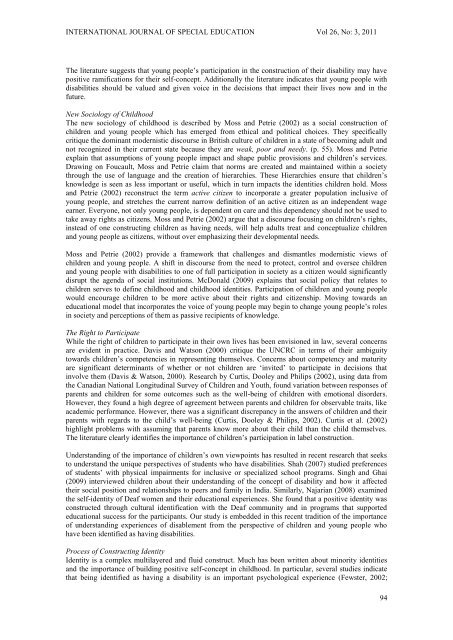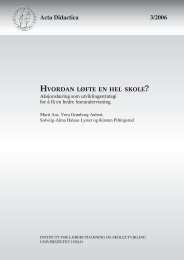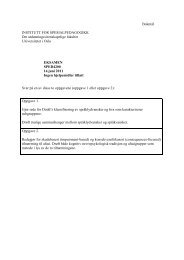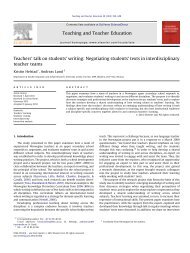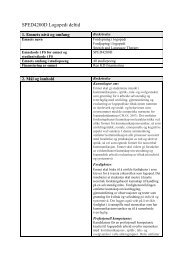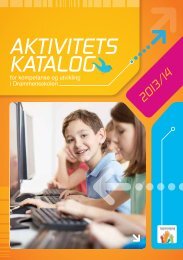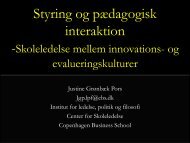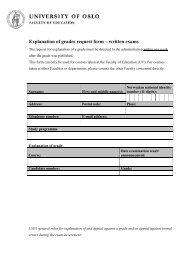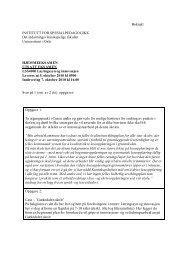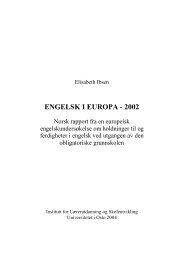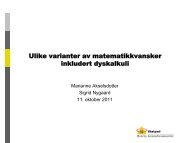International Journal Special Education
International Journal Special Education
International Journal Special Education
Create successful ePaper yourself
Turn your PDF publications into a flip-book with our unique Google optimized e-Paper software.
INTERNATIONAL JOURNAL OF SPECIAL EDUCATION Vol 26, No: 3, 2011The literature suggests that young people’s participation in the construction of their disability may havepositive ramifications for their self-concept. Additionally the literature indicates that young people withdisabilities should be valued and given voice in the decisions that impact their lives now and in thefuture.New Sociology of ChildhoodThe new sociology of childhood is described by Moss and Petrie (2002) as a social construction ofchildren and young people which has emerged from ethical and political choices. They specificallycritique the dominant modernistic discourse in British culture of children in a state of becoming adult andnot recognized in their current state because they are weak, poor and needy. (p. 55). Moss and Petrieexplain that assumptions of young people impact and shape public provisions and children’s services.Drawing on Foucault, Moss and Petrie claim that norms are created and maintained within a societythrough the use of language and the creation of hierarchies. These Hierarchies ensure that children’sknowledge is seen as less important or useful, which in turn impacts the identities children hold. Mossand Petrie (2002) reconstruct the term active citizen to incorporate a greater population inclusive ofyoung people, and stretches the current narrow definition of an active citizen as an independent wageearner. Everyone, not only young people, is dependent on care and this dependency should not be used totake away rights as citizens. Moss and Petrie (2002) argue that a discourse focusing on children’s rights,instead of one constructing children as having needs, will help adults treat and conceptualize childrenand young people as citizens, without over emphasizing their developmental needs.Moss and Petrie (2002) provide a framework that challenges and dismantles modernistic views ofchildren and young people. A shift in discourse from the need to protect, control and oversee childrenand young people with disabilities to one of full participation in society as a citizen would significantlydisrupt the agenda of social institutions. McDonald (2009) explains that social policy that relates tochildren serves to define childhood and childhood identities. Participation of children and young peoplewould encourage children to be more active about their rights and citizenship. Moving towards aneducational model that incorporates the voice of young people may begin to change young people’s rolesin society and perceptions of them as passive recipients of knowledge.The Right to ParticipateWhile the right of children to participate in their own lives has been envisioned in law, several concernsare evident in practice. Davis and Watson (2000) critique the UNCRC in terms of their ambiguitytowards children’s competencies in representing themselves. Concerns about competency and maturityare significant determinants of whether or not children are ‘invited’ to participate in decisions thatinvolve them (Davis & Watson, 2000). Research by Curtis, Dooley and Philips (2002), using data fromthe Canadian National Longitudinal Survey of Children and Youth, found variation between responses ofparents and children for some outcomes such as the well-being of children with emotional disorders.However, they found a high degree of agreement between parents and children for observable traits, likeacademic performance. However, there was a significant discrepancy in the answers of children and theirparents with regards to the child’s well-being (Curtis, Dooley & Philips, 2002). Curtis et al. (2002)highlight problems with assuming that parents know more about their child than the child themselves.The literature clearly identifies the importance of children’s participation in label construction.Understanding of the importance of children’s own viewpoints has resulted in recent research that seeksto understand the unique perspectives of students who have disabilities. Shah (2007) studied preferencesof students’ with physical impairments for inclusive or specialized school programs. Singh and Ghai(2009) interviewed children about their understanding of the concept of disability and how it affectedtheir social position and relationships to peers and family in India. Similarly, Najarian (2008) examinedthe self-identity of Deaf women and their educational experiences. She found that a positive identity wasconstructed through cultural identification with the Deaf community and in programs that supportededucational success for the participants. Our study is embedded in this recent tradition of the importanceof understanding experiences of disablement from the perspective of children and young people whohave been identified as having disabilities.Process of Constructing IdentityIdentity is a complex multilayered and fluid construct. Much has been written about minority identitiesand the importance of building positive self-concept in childhood. In particular, several studies indicatethat being identified as having a disability is an important psychological experience (Fewster, 2002;94


